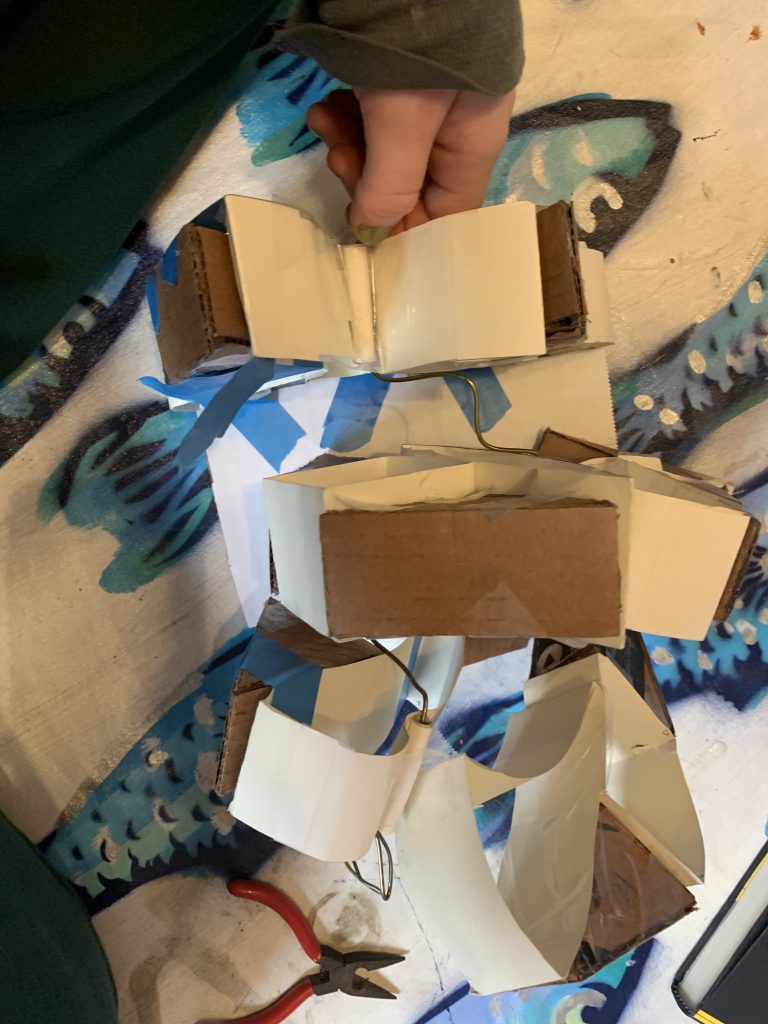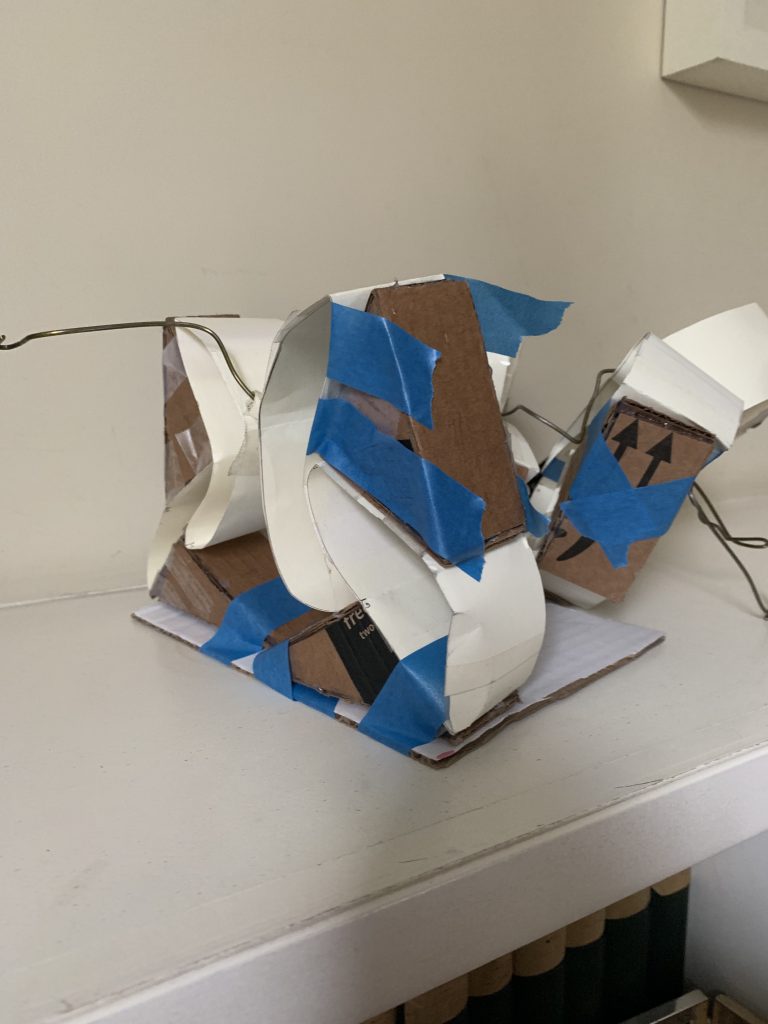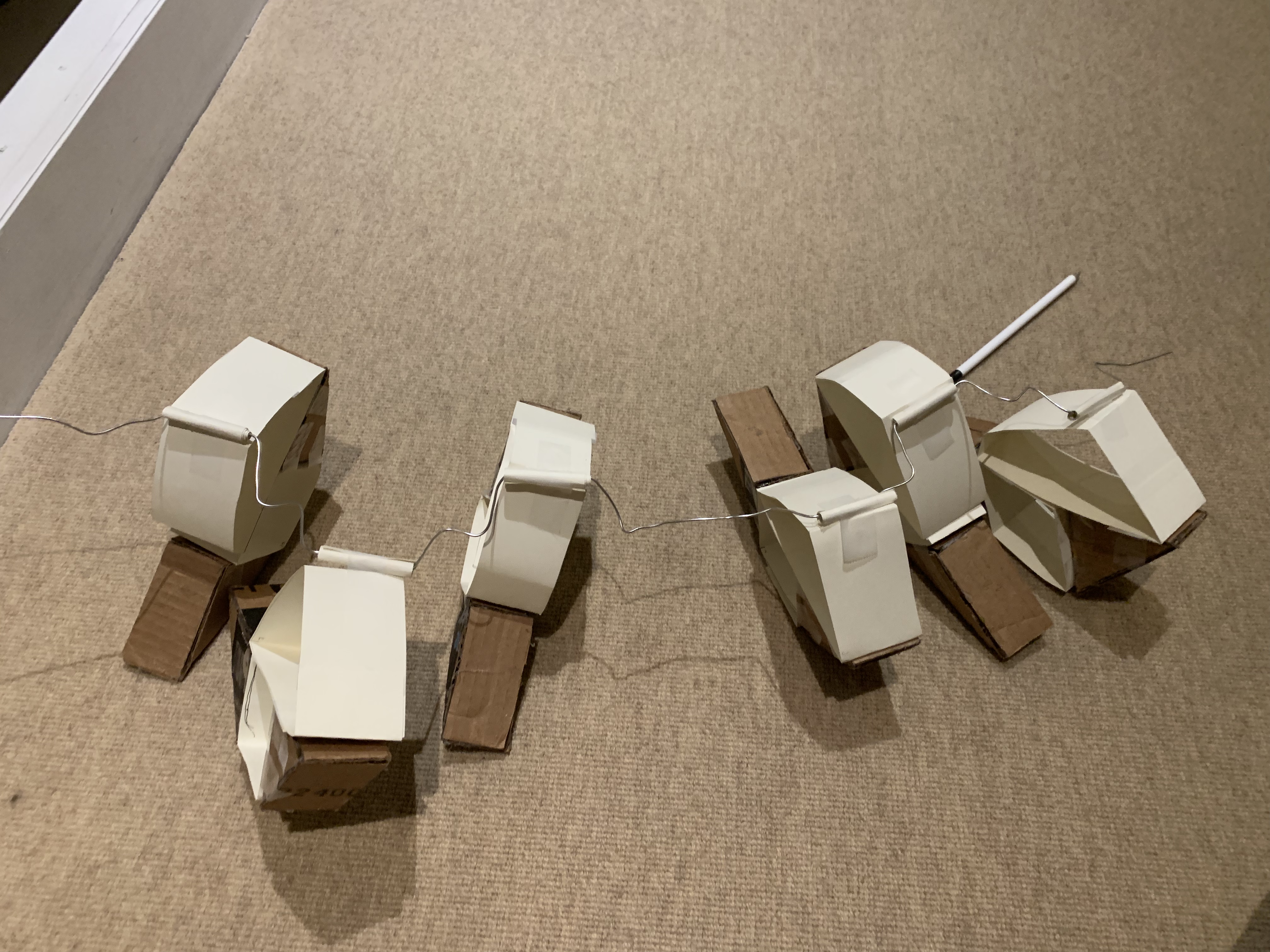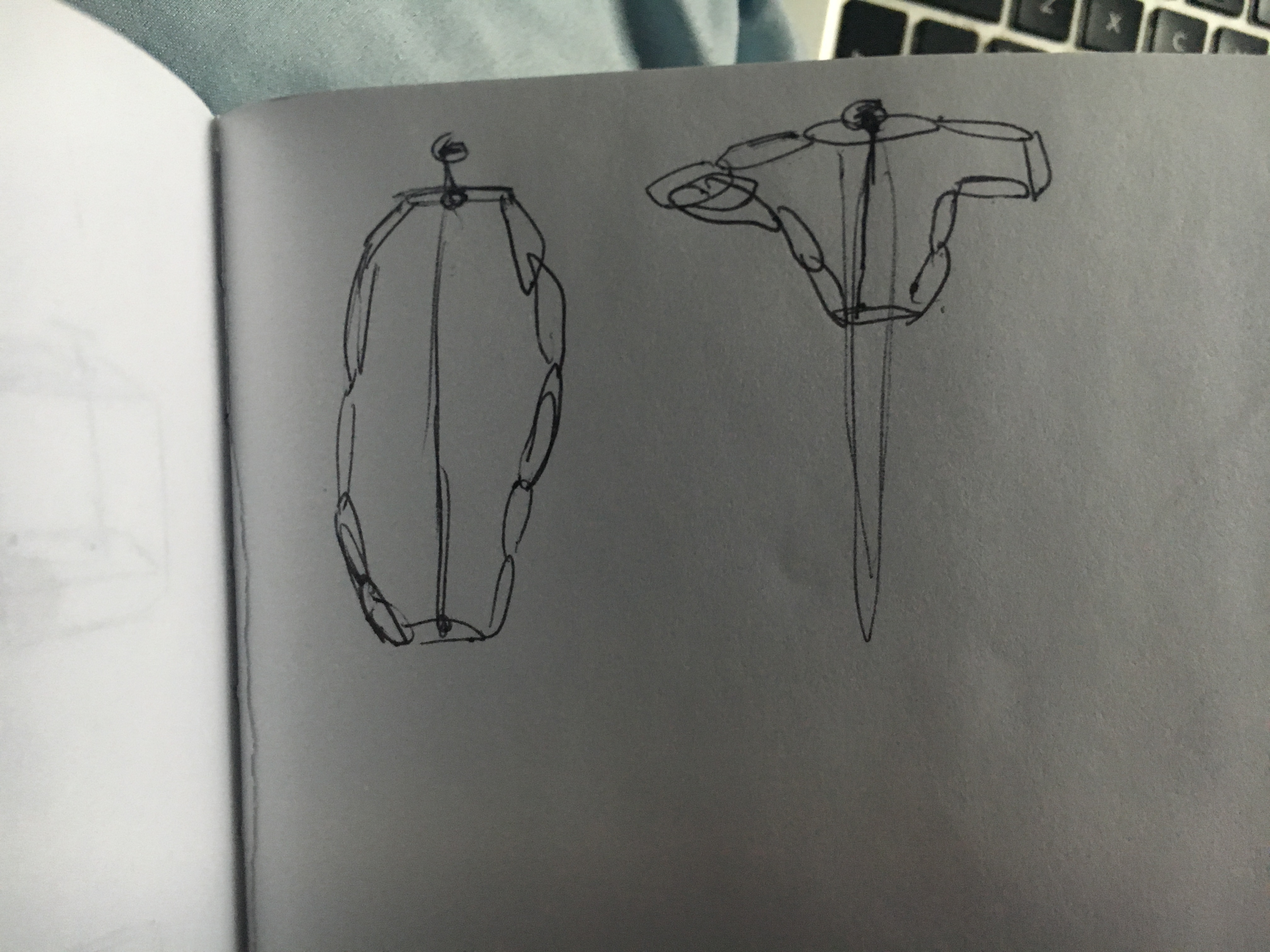
The final result of my conference work is the crippled strandbeest. The beest, created to be a kind of evolutionary step, is a husked body with the ability to move freely about. In the final chapters of our book, Brockeman introduces us to artist with the idea to combine human and machine. To idealize the human body to make it more compatible with machines, to look at the body as a machine itself. However, as I was reading I kept thinking that their idealized body machine is not the body I have, nor is it the body a lot of people have. The body they try to present is healthy and functioning at its full potential. The body has no faults and completely obeys the mind or machine. My body is not healthy, it does not do what I want it to sometimes. The artists, in my opinion, forgot the pains of living in a body that betrays you.

I saw a reflection of this in my strandbeest, as once operational, the machine would twist itself into seemingly uncomfortable positions and break itself trying to walk. At first my instinct was to just keep fixing and tinkering with it, it had to work exactly how I wanted it to. After the third time I took it apart, I realized that maybe the machine I had built was one that wasn’t capable of walking how I wanted it to.

When it couldn’t walk, the machine rested on the outsides of the feet in a sort of kneeling position. I grounded two of the legs so that they would stay kneeling, providing enough support and structure for the other legs to move freely. The machine is able to move better and without tearing itself apart. The body has to make compromises for its own safety.


